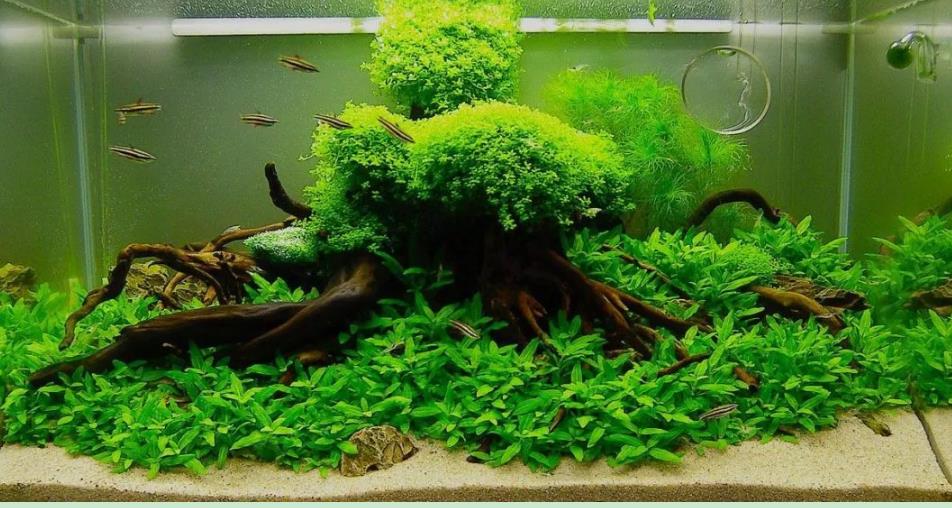-
1
Purchase and install lighting to support plant growth.Just like other plants, your aquarium plants will need light to stay alive. Light is needed for plants to undergo photosynthesis, which gives them their energy and nutrients. Check the light needs of your individual plants, as they can vary from plant to plant. Full-spectrum fluorescent and LED tank lights are both great options. Plants can also get some light from nearby windows.
1. Some plants require a lot of extra light, so do your research before you make a selection.
2. It's recommended that when you start out, stick to less than 2.5 fluorescent watts per gallon unless you put a carbon dioxide system in place.
-
2
Quarantine and treat new plants before adding them to your tank.New plants may already harbor pests like snails or shrimp that can threaten the health of your aquarium. Snails and shrimp can breed quickly and fill your tank, unless you have fish that feed on them. Additionally, they can introduce bacteria or diseases to the water. A quarantine will allow you to spot pests before they get in your tank. You can also treat your plants with a bleach solution.
1. To treat with bleach, mix 1 part bleach into 19 parts water. Dip your plants for 2 to 3 minutes, depending on how sensitive your plants are. Thoroughly rinse the plants in fresh water before placing them in dechlorinated water.
2. To prevent snail infestations, dip your plants into saltwater after purchase. Mix 1 cup (0.24 L) of aquarium or kosher salt into 1 gallon (3.8 L) of water. Dip the plants for 15-20 seconds, keeping the roots above water. Be sure to rinse them off with clean fresh water before placing them in the tank.
3. After a week of quarantine, place them in the aquarium.
-
3
Add a plant-friendly substrate to the tank and cover it with gravel.Your substrate is the material you use to cover the bottom of the tank. When you’re growing plants, you need a nutrient-rich substrate, which can initially be a bit more expensive. The substrates that are good for planting also tend to cloud the water when they’re disturbed, but you can stop this by applying a thin layer of gravel over it.
1. Seachem Flourite contains all of the necessary nutrients and comes in a variety of colors.
2. Clays and laterite are good options for nutrients and can be less expensive. However, they often take more time to settle in the tank.
3. Aqua Soil has good nutrients for plants but drops the pH of the water to 7. While this is optimal for plants, it can harm some fish. Check the pH requirements of your fish before choosing this substrate.
4. Gravel alone will not nourish your plants.
-
4
Anchor the plants that need to be on the substrate so they get nutrients.Some plants need to be rooted in the substrate in order to absorb needed nutrients. Place the roots of these plants just under the substrate, but don't bury them deep because this can cover the rhizome of the plant, which is a thick green part above the roots. Covering the rhizome can cause the entire plant to die.
- Make sure that you do not anchor one plant on top of another.[16]
-
5
Tie the remaining plants to rocks or wood so that they can root.Some plants, like moss, Java Fern, or Anubias Nana prefer to root into rock or wood. The plants will then take root on the rock or wood. Wrap fishing line gently around the plant, then loop the line around the rock or wood. Tie the fishing line in place, then add the rock and plant to your tank.
- Driftwood and lava rock are great options for tying down plants.
-
6
Add your fish after allowing a week for your tank to stabilize.Wait a week after establishing your plant garden before adding the fish. If you already own fish, you can leave them in a temporary aquarium. Otherwise, it’s best to wait until your tank is ready before acquiring your fish.
1. Waste excreted by the fish will help feed your plants.
2. Resist the urge to add your fish early. Your tank needs to go through a process called “cycling,” where the water conditions stabilize and become safe for fish. Very few fish can survive before the water conditions have stabilized.
